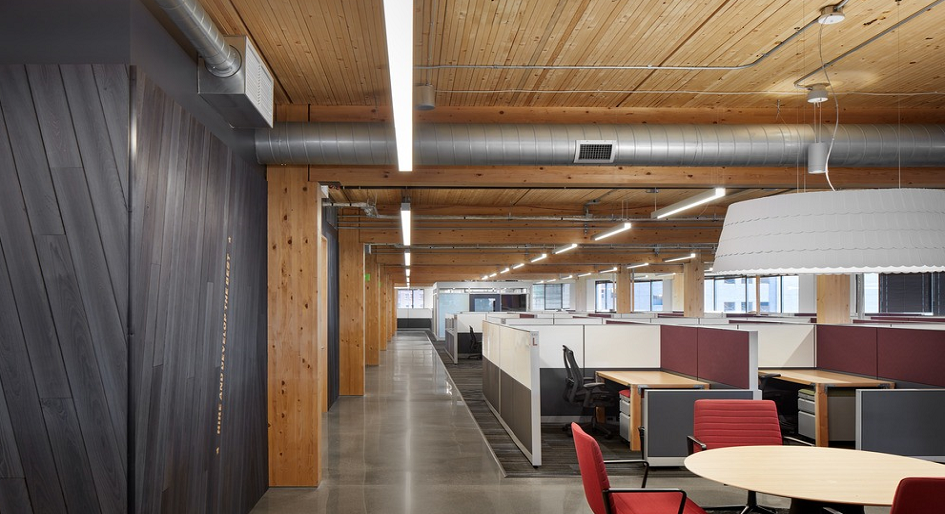Mass-timber construction is gaining traction across Canada thanks to new product technologies, advanced techniques, and changes within the 2020 National Building Code of Canada (NBCC). With British Columbia already adopting provisions within the 2020 NPCC that allow for the construction of wood buildings up to 12 storeys (up from 6 storeys), and other provinces set to follow suit, the conversation around mass-timber building design is evolving.
Toronto’s IA Interior Architects is among those leading the discussion. Recently, the global interior design firm released a white paper outlining the challenges and opportunities ahead for mass-timber projects, entitled Timber Towers: A new generation of mass-timber buildings is sparking complex design challenges—and innovative solutions.
“The age-old methodology of heavy-timber construction is becoming an increasingly popular and viable alternative to steel framing for high-rise commercial projects,” the report states. “Mass-timber structures offer numerous benefits to both developers and occupants, from sustainability to biophilic beauty … End users, meanwhile, enjoy the superior acoustic performance and woodsy, decidedly non-corporate feel of the interiors.”
The paper outlines the numerous advantages of such buildings, as well as interior design challenges that require due consideration by tenants and a “more deliberate coordination of trades and more time for the build-out.” Top among these are issues posed by denser column grids, minimal allowance for drop ceilings, mechanical system visibility issues, and building code interpretation complications.
Additionally, the report turns a spotlight on innovators within the mass-timber construction field, as well as notable mass-timber projects throughout North America.
“Despite significant press and informational coverage of the mass-timber typology from a construction and architecture standpoint, there’s been less such discussion of the interiors of said buildings, which offer unique attributes as well as significant challenges,” the white paper offers, adding, “But when approached from an informed perspective, these complexities are in fact opportunities that can be exploited and celebrated.”
Read IA’s white paper.




